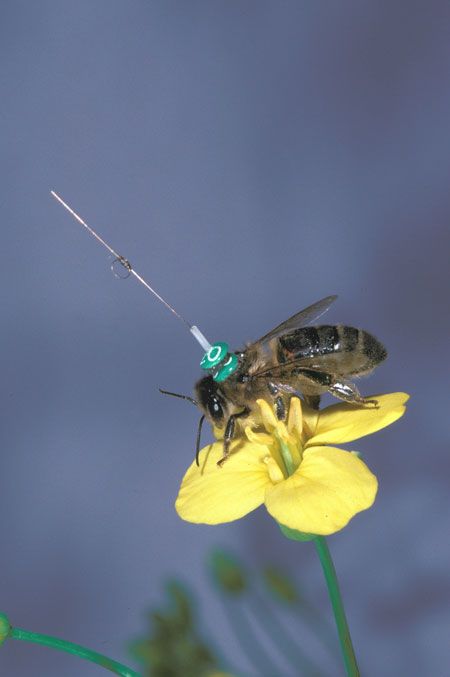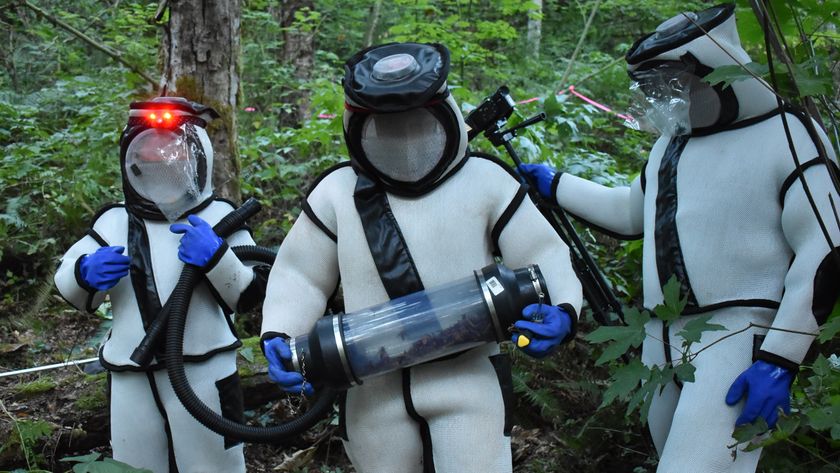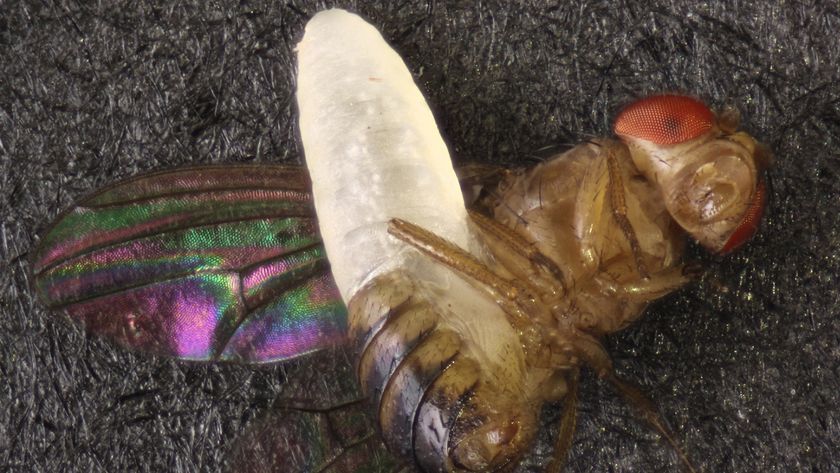Dancing Bees Speak in Code

Scientists have long marveled over the dance of the bee. A little jitterbug seems to reveal to coworkers the location of a distant meal. But how and whether the dance really works has remained controversial.
A new study confirms the dancing is a form of communication.
Bees outfitted with tracking devices responded to the wiggling of one of their fellow foragers, who had just returned to the hive from some newfound bee vittles.? The dance, which is performed on one of the honeycomb walls, is not an exact language, but it gets the job done.
The central element of the choreography is a shimmy, or waggle, along a straight line. For emphasis, the bee repeats this move several times by circling around in a figure-8 pattern. The angle that the shimmy makes in relation to an imaginary vertical line is the direction to the food source with respect to the sun.
For example, a waggle dance pointing towards 3 o'clock is bee talk for: "Hey, there's food 90 degrees to the right of the Sun."
A solar compass
This solar compass in honeybees was originally observed in the 1960s by the Nobel Prize winner Karl von Frisch. Later, it was noticed that the number of waggles in one figure-8 corresponds to the distance to the meal.
Sign up for the Live Science daily newsletter now
Get the world’s most fascinating discoveries delivered straight to your inbox.
These remarkable relations have been supported by other experiments, including one in which a mechanical bee danced for the hive and the real bees responded. But there have remained doubts as to whether the other bees could actually decipher the dancer's message.
"The dance isn't a trivial demonstration, but an abstract code," says J. R. Riley of Rothamsted Research, UK.
One complication is that hives are dark and cramped, so other bees - called "recruits" - do not see the full pattern as human observers do. Furthermore, recruits tend to take longer to find the food than would be expected.
"Flying directly, it should only take them a minute or so, but they often don't find the feeder for 5 or 10 minutes," Riley told LiveScience.
And sometimes they never find it. For this reason, some scientists have speculated that the waggle dance merely excites other bees, which then fly out of the hive searching for a scent trail left by the returning bee.
Making a beeline
To solve the controversy, Riley and colleagues strapped radar transponders to 19 dance spectators. The flight paths show that the bees make a beeline to the vicinity of the food source, but then fly around in a looping search pattern. Only two of the radar-tracked recruits actually found the food.
Apparently, the dance gives incomplete instructions, and the bees rely on odors, colors, and other clues to hone in on the final location. Still, the dance gets them pretty close. On average, the recruits came within 18 feet of the food before switching to search mode.
"This was in spite of considerable wind drift which would have pushed them off course if they had not compensated," Riley said.
To further investigate bee-havior, the team moved some recruits several hundred yards away from the hive and then released them. The displaced bees flew the prescribed direction and distance - where they found nothing because their starting point was off.
This is the most definitive proof that recruited bees read the waggle dance, since the transplanted bees chose the foretold trajectory without any of the possible other cues - odors (bees have a strong sense of smell), landscape, other bees - that might exist along the true hive-to-feeder route.
The work was described earlier this month in the journal Nature.
Related Stories













